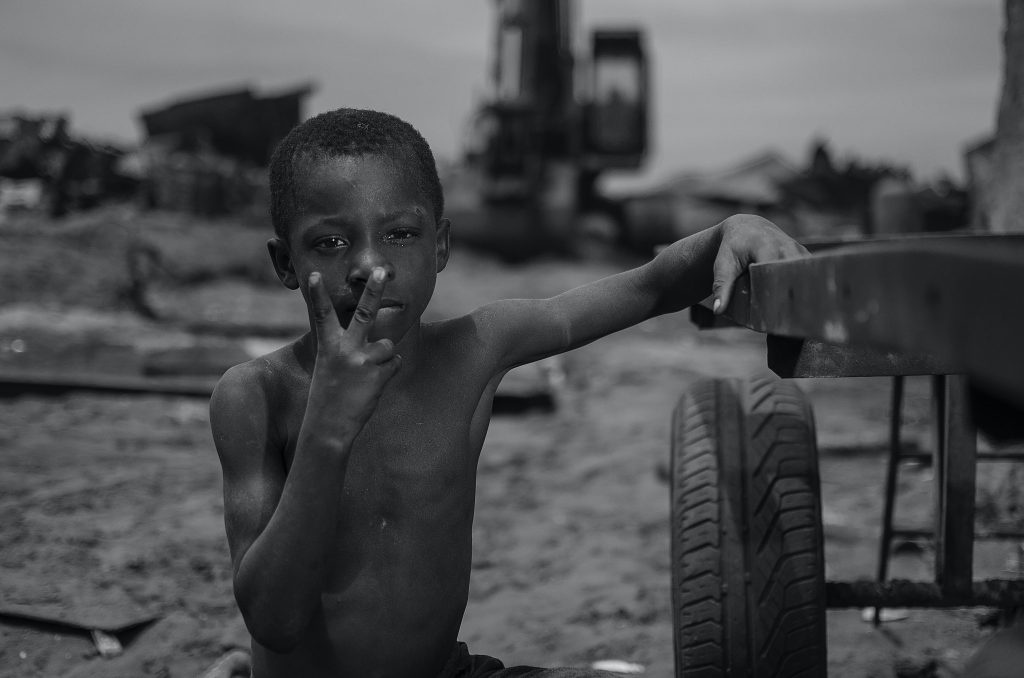Whilst western kids play with their gaming gadgets, some kids in Africa are hard at work mining the very material that goes into making those devices. Now, the sustainability of our environment depends on how we treat each member of our society. While the older ones lead, dominate, and make decisions in our society, it is important to not neglect the presence of the younger generation. As time passes there’s a gradual shift and while the old pass on, the young ones take over. However, what happens when there are no young ones to take the place of the adults when they pass on?
Children or Cobalt?
The issue of child labor and slavery in cobalt mining is one of the most abhorrent practices by humans towards children. For instance, in parts of the Democratic Republic of Congo (DRC), Central Africa, little children as young as seven are pushed to mine cobalt, a mineral found in rocks. Being that more than half of the world’s cobalt comes from the nation, more amateur “miners” are pushed into the field to balance the demand. Amnesty International estimates that around 40,000 children work in southern DRC. (Amnesty International 2020).
Children are thrown into a dangerous and wild environment with little or no hope of survival. Most tech companies push them into artisanal mines to extract cobalt. These companies use cobalt to make batteries used in phones, laptops, electric cars, and various gadgets.
How safe is cobalt mining for children?
It is an illegal and unhealthy practice because they are still young with little or no experience. Also, they lack parental care and as such, grow wild while trying to earn a living. When they mine, they don’t use masks, gloves, or protective coverings to shield them from the harmful substances within such an environment. Instead, they use local tools or even bare hands to sift through rocks in search of the mineral.
A large number of children do this daily to survive. Some try to support the family as their parents may not be capable of doing so. Others do so to go to school or be able to eat. As one of them reported “I could only eat when I had enough money.” (Amnesty International and Afrewatch, 2020)
Seeing that manufacturers are using these minerals to power various gadgets and automobiles, the demand is increasing and more cobalt will be required with time. This is why proper measures should be put in place for mining in a legal way, as well as terminating the heinous act of child labor (Nelly, 2018). Furthermore, the global demand for cobalt is increasing and as such, it may become more difficult to regulate. The children who do this strive daily for meager pay of less than $2 a day (James, 2019).

Dangerous risks associated with child slavery in cobalt mining
It is widely known that these children are not secure and lack adequate protection as well as support and care from both the family and government. Mining in such an exposed and dangerous environment without any form of protection calls for immediate action. These children are young and have little or no educational background.
According to the report by The Lancet, there is a high risk of accumulating multiple harmful conditions within the body over time. These could include physical, social, emotional, or even psychological problems. Researchers have associated birth defects with contamination and prolonged exposure to toxic materials. This mainly happens when parents work on sites and later give birth to their children in such an environment.
Due to these dangerous exposures and high rates of toxic pollution, more children born and raised in such an environment are faced with defects such as abnormal limbs (hands and legs), cleft palates, and spina bifida. (Vaan Dan Brusselen, MD et al. 2000)
Cobalt and pollution
The United Nations Center for Disease Control also explains that chronic exposure to cobalt-containing hard metal can lead to a serious lung disease called “hard metal lung disease”, which can cause respiratory sensitization, asthma, decreased pulmonary function, and shortness of breath. It could also lead to skin sensitization and result in a red, itchy skin rash.
Todd C. Frankel from the Washington Post reports that many of them are ignorant of the environmental health risks. Various scientists have recorded alarming radioactivity levels around these regions. Moreover, the waste enters rivers and streams, thereby polluting the water used for drinking and cleaning. Also, the air is polluted too, as dust and fumes from pulverized rocks leak into the atmosphere.
Enlightening the people
Frankel also pointed out that despite the dangers and risks associated with this activity, the people still love their jobs since it’s their only means of survival. He states “It is a poverty problem”. Since they are unable to go to school, eat, wear good clothes, or take care of basic necessities in life, they delve into the risky jobs.
This is not ideal and never a sign of a growing nation. Society is to train the younger generation in a conducive environment. However, they are forcing them to live in these situations. How will they take over after their predecessors pass on? What knowledge will they thrive on?
We should put in place more positive measures to reduce and permanently eliminate this act.
Is there a way forward?
Based on numerous reports, the government of the Democratic Republic of Congo (DRC), has pledged to eliminate the illegal act of child slavery in cobalt mining by 2025. The Minister of State for Employment made this statement at a workshop on 30th August 2017.
The DRC government held a meeting in Kinshasa where they introduced the new strategy to curb illegal activity.
This is a positive movement as the high demand for cobalt will help boost Congo’s economy if the government follows due processes. Also, they will help to supply more employment opportunities legitimately and reduce hunger and poverty. Thus, enabling a sustainable environment and reducing environmental hazards.
This is one of the core values of the THRIVE project. There is a massive movement to create awareness and stop dangerous acts like these while promoting a sustainable environment for humans to thrive. It is geared at creating a balanced and eco-friendly environment.
References
Amnesty International and Afrewatch (2020). Is my Phone Powered by Child labor? Retrieved from https://www.amnesty.org/en/latest/campaigns/2016/06/drc-cobalt-child-labour/#:~:text=Given%20that%20more%20than%20half,our%20phones%20contain%20child%20labour.
Amnesty International (2017). Democratic Republic of Congo: Government must deliver on pledge to end child mining labour by 2025. Retrieved from https://www.amnesty.org/en/latest/news/2017/09/democratic-republic-of-congo-government-must-deliver-on-pledge-to-end-child-mining-labour-by-2025/
James Gordon (2019). Cobalt: The Dark Side of a Clean Future. Retrieved from https://www.raconteur.net/corporate-social-responsibility/cobalt-mining-human-rights/
Nelly Peyton (2018). Child Laborers as Young as Six Dig for Cobalt to Power Electric Cars and Phones. Retrieved from https://theirworld.org/news/drc-children-dig-for-cobalt-to-power-electric-cars-phones
Todd C. Frankel, (2018). The Hidden Costs of Cobalt Mining. Retrieved from https://www.washingtonpost.com/news/in-sight/wp/2018/02/28/the-cost-of-cobalt/
UNICEF (?). Maternal, newborn and child survival. Retrieved from https://www.unicef.org/health/maternal-newborn-and-child-survival
U. S. Department of Health and Human Services (?). The National Institute for Occupational Safety and Health (NIOSH). Retrieved from https://www.cdc.gov/niosh/topics/cobalt/
Vaan Dan Brusselen, MD, et al. (2000). Metal mining and birth defects: a case-control study in Lubumbashi, Democratic Republic of the Congo. Retrieved from https://www.thelancet.com/journals/lanplh/article/PIIS2542-5196(20)30059-0/fulltext


